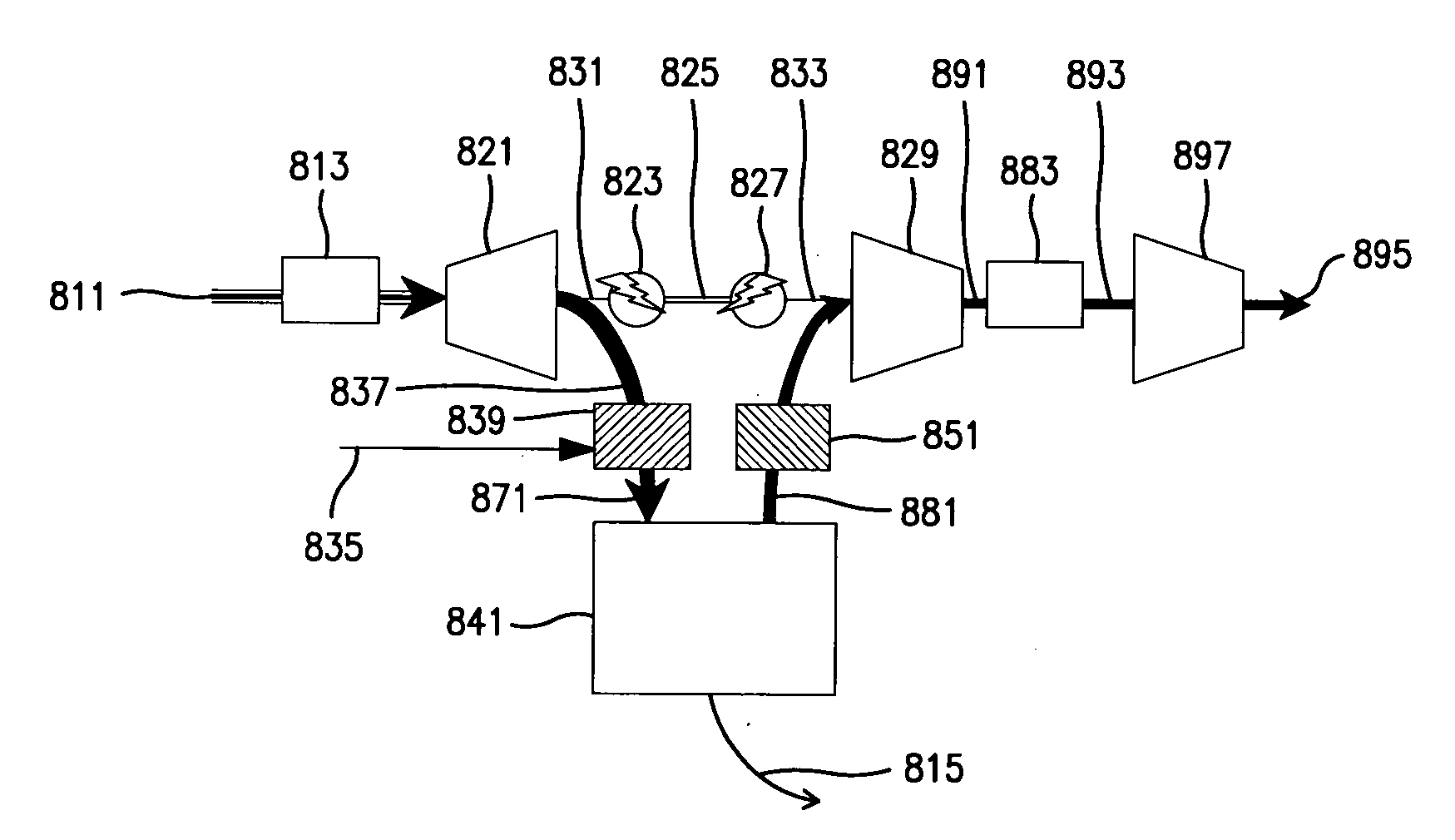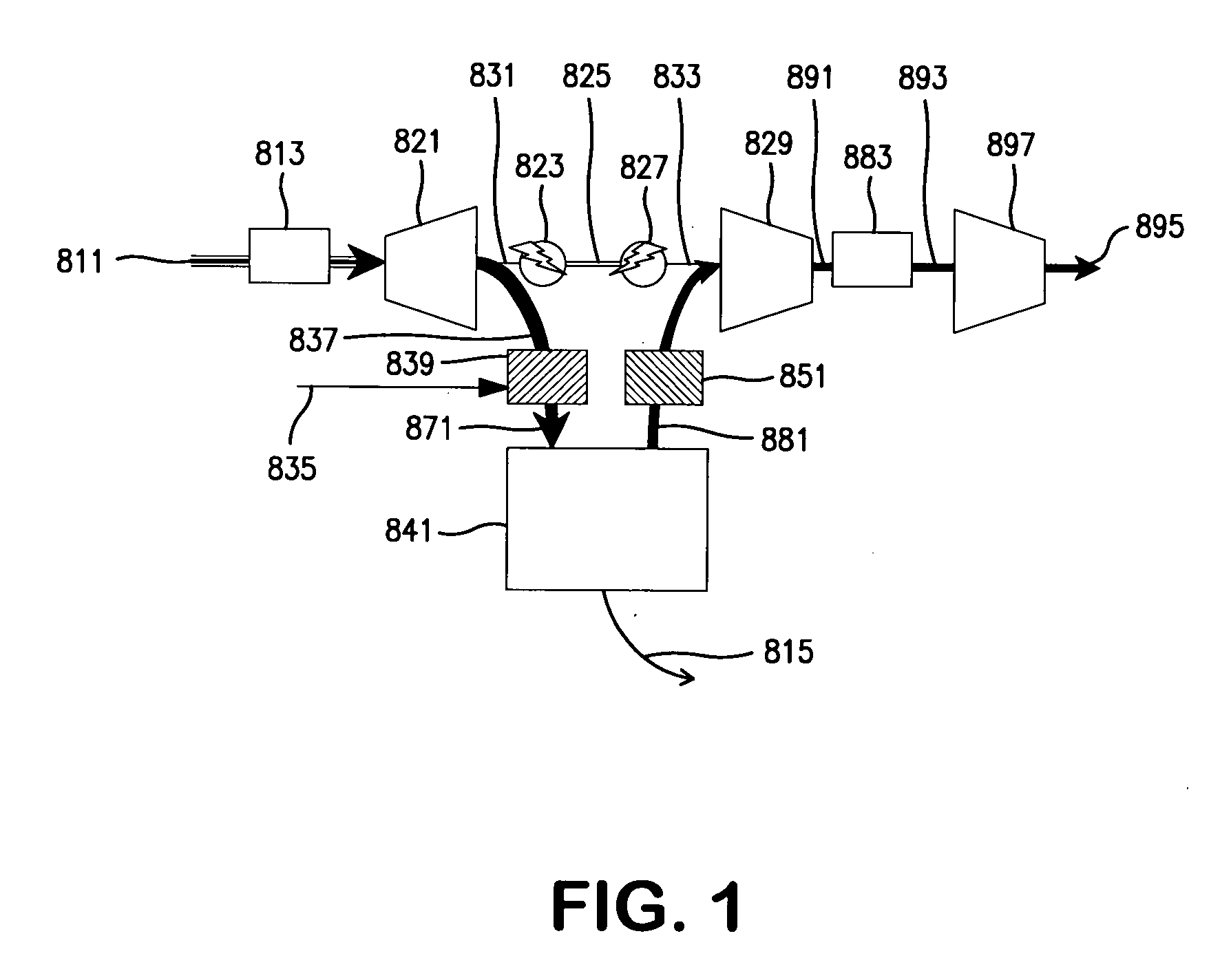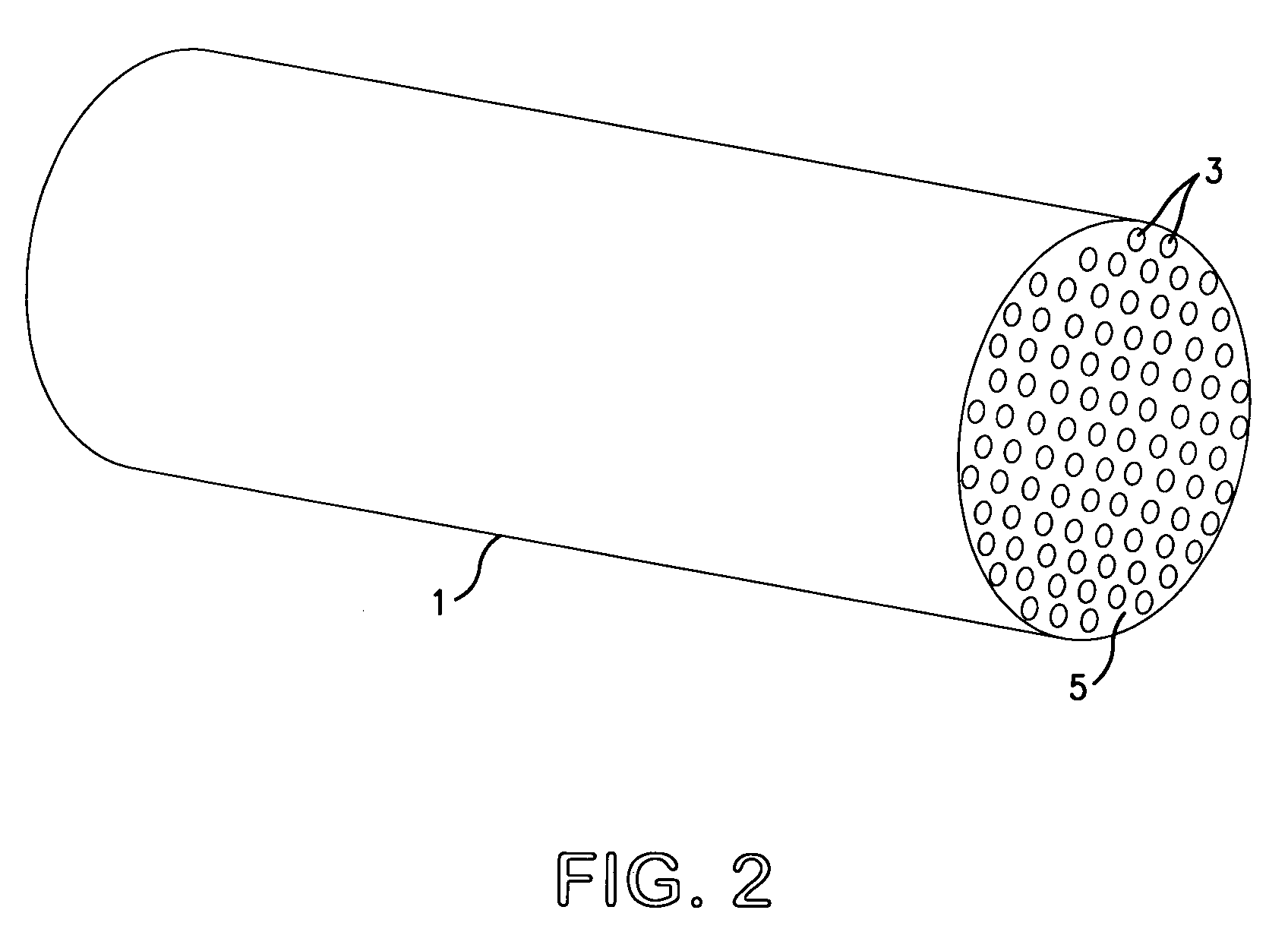Removal of a target gas from a mixture of gases by swing adsorption with use of a turboexpander
a technology of target gas and turboexpander, which is applied in the direction of separation process, dispersed particle separation, chemistry apparatus and processes, etc., can solve the problems of inability to make a complete separation and separate both components with a high recovery, and none of these to date present a viable solution to the problem of producing good light recovery and poor recovery of desired products
- Summary
- Abstract
- Description
- Claims
- Application Information
AI Technical Summary
Benefits of technology
Problems solved by technology
Method used
Image
Examples
example 1
[0097]This example illustrates the use of a turboexpander to condition acid gas (i.e., natural gas containing H2S and CO2) so that PSA can operate in the window that optimizes methane recovery. FIG. 1 hereof shows a process scheme in which a turboexpander is used to set the pressure and temperature of an acid gas that is separated in a PSA. An acid gas stream 811 with a temperature of 100° C. and pressure of 1,500 psi is produced from a gas field and fed to the process. The CO2 content of the stream is about 66 mol % and the H2S concentration is 2 mol %. Water is present at its saturated vapor pressure and the concentration of the heavy hydrocarbons is about 2 mol %. The heavy hydrocarbons contain a small fraction of waxy species with carbon numbers as large as 36. For this stream 811, CO2 comprises the majority of the heavy component that will be removed by a kinetically controlled PSA process. If DDR zeolite is used as the adsorbent in the kinetically controlled PSA, the loading i...
example 2
[0102]With a laminated sheet parallel channel contactor described for FIG. 10 hereof, a PSA / RCPSA cycle with five steps is operated to produce a product stream containing about 20 vol % CO2 and about 80 vol % CH4. Overall methane recovery for the PSA / RCPSA cycle is computed to be about 95 vol %. FIG. 10 hereof is a schematic diagram of five different steps in a preferred PSA / RCPSA cycle suitable for use in this invention. In the first step 611a parallel channel contactor PSA / RCPSA cycle is pressurized with high pressure product gas 687. This pressurization raises the pressure in the parallel channel contactor and fills the contactor with the purified product containing about 20 vol % CO2 and about 80 vol % CH4. In a second step 621a high pressure, 51 atmosphere (atm) feed gas 671 is conducted through the parallel channel contactor. During this step 621 the DDR adsorbent layer adsorbs CO2 from the flowing feed gas 671. A purified product 625 flows out of the end of the contactor. The...
example 3
[0107]Using this parallel channel contactor, a PSA / RCPSA cycle with five different steps is operated to produce product stream containing about 2 vol % N2 and about 98 vol % CH4. Overall methane recovery for the PSA / RCPSA cycle is computed to be about 91 vol %. FIG. 11 hereof shows a schematic diagram of the five different steps in the PSA / RCPSA cycle. In the first step 711a parallel channel contactor PSA / RCPSA cycle is pressurized with high pressure product gas 787. This pressurization raises the pressure in the parallel channel contactor and fills the contactor with the purified product containing about 2 vol % N2 and about 98 vol % CH4. In a second step 721a high pressure 100 atm feed gas 771 is flowed through the contactor. During this step 721 the DDR adsorbent layer removes N2 from the flowing feed gas 771. A purified product 725 flows out of the end of the contactor. The feed gas 771 is flowed at a rate such that as the product 725 emerges from the contactor a concentration f...
PUM
| Property | Measurement | Unit |
|---|---|---|
| pore sizes | aaaaa | aaaaa |
| pressure | aaaaa | aaaaa |
| surface areas | aaaaa | aaaaa |
Abstract
Description
Claims
Application Information
 Login to View More
Login to View More - R&D
- Intellectual Property
- Life Sciences
- Materials
- Tech Scout
- Unparalleled Data Quality
- Higher Quality Content
- 60% Fewer Hallucinations
Browse by: Latest US Patents, China's latest patents, Technical Efficacy Thesaurus, Application Domain, Technology Topic, Popular Technical Reports.
© 2025 PatSnap. All rights reserved.Legal|Privacy policy|Modern Slavery Act Transparency Statement|Sitemap|About US| Contact US: help@patsnap.com



